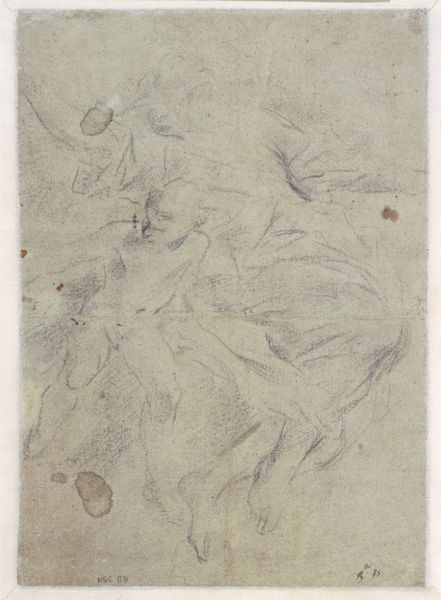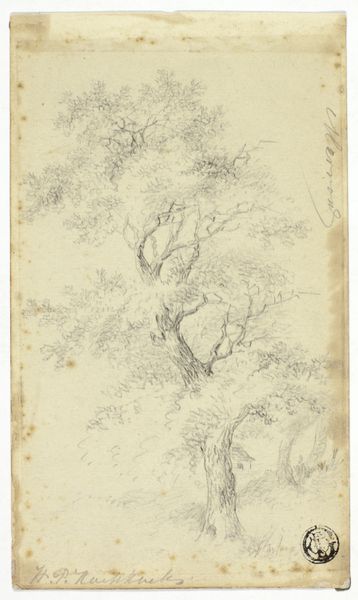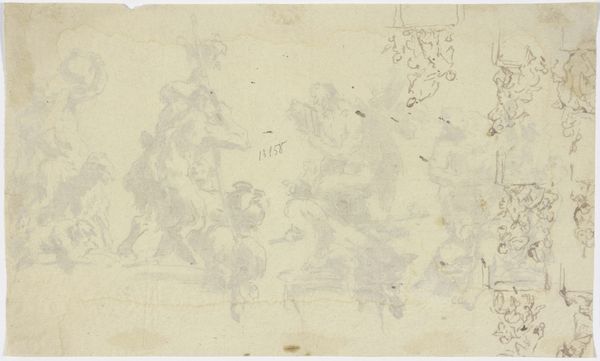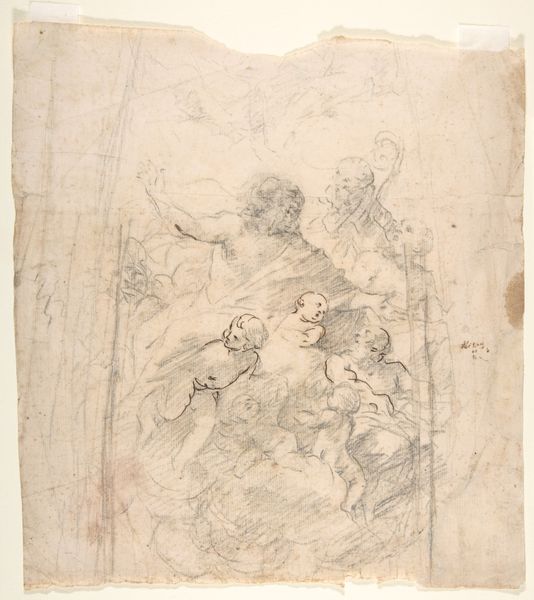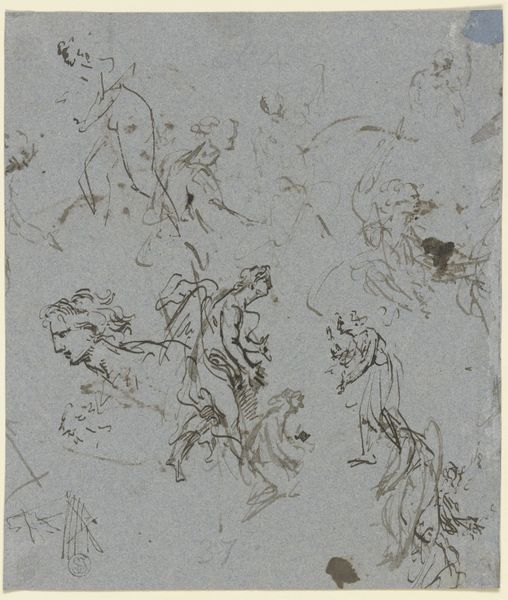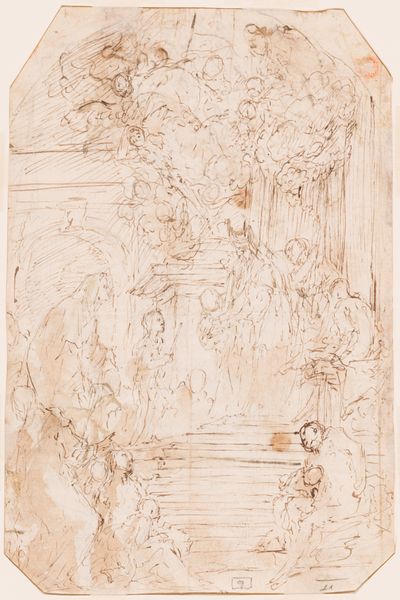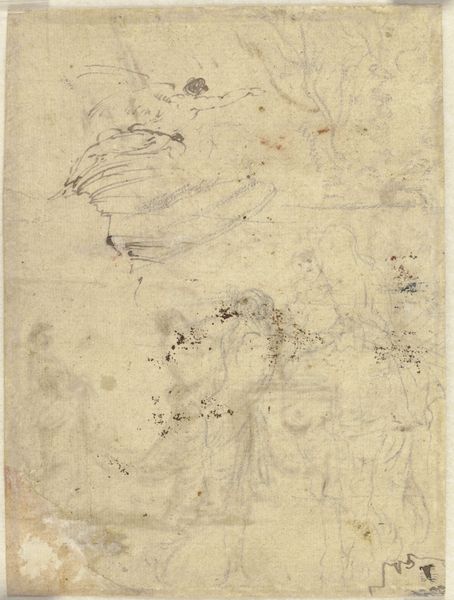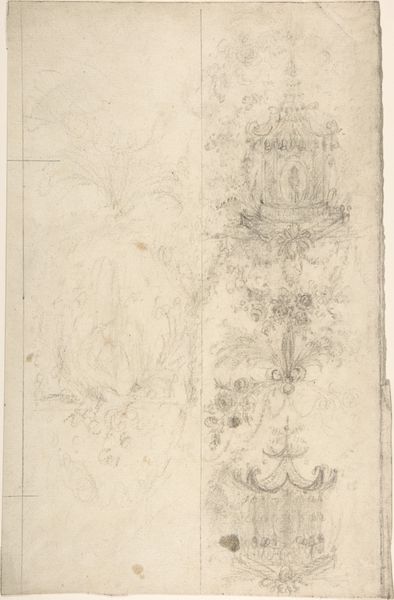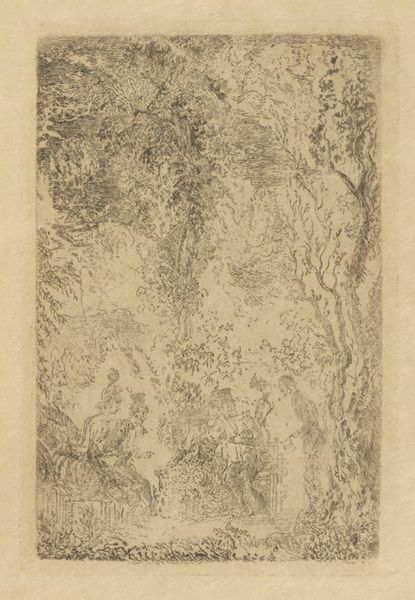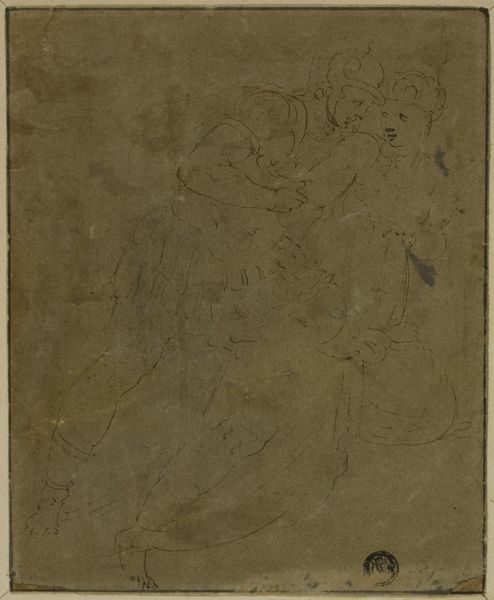
#
toned paper
#
light pencil work
#
ink painting
#
pencil sketch
#
incomplete sketchy
#
charcoal drawing
#
possibly oil pastel
#
underpainting
#
watercolour bleed
#
watercolor
Copyright: Public domain
Curator: Here we have “Studies for Four Figures” by Palma il Giovane, an intriguing sketch executed in watercolor, ink, and perhaps charcoal, all on toned paper. What strikes you about it initially? Editor: There's an almost dreamlike quality, a sense of figures emerging from or dissolving into the paper itself. The light pencil work creates this hazy, ethereal feel. Curator: Precisely. Without knowing the exact date of this drawing, we can still situate Palma's study within the context of 16th-century artistic practice. Such studies allowed artists to explore anatomy, composition, and the dynamics of figures within narrative scenes. How might these figures speak to their own contemporary society? Editor: Considering its composition, the strategic use of watercolor bleed contributes to an underpainting effect that blurs the boundaries between forms. The incompleteness adds a sense of movement, almost as if the figures are captured mid-gesture. The interplay between the vague and defined lines creates dynamism. Curator: Indeed. Furthermore, the incomplete sketchy quality invites speculation about the artist's intentions and the potential stories behind these characters. Were they studies for a religious painting? A mythological scene? Palma's social circles were tight, and these characters may represent very specific stories and very real people, too. Editor: What truly grabs my attention is the balance it strikes. Even with a monochrome palette, the different textures that emerge are striking—the blending watercolors against precise lines. It's controlled yet chaotic at the same time. Curator: I see how this preliminary nature might reflect the societal position of art itself during Palma’s time, capturing the fluidity and constant reevaluation of power and meaning that art possessed then. It's about a particular form that's always changing. Editor: A thought-provoking observation. Viewing the piece through the lens of constant reinvention—that has shifted my focus toward that previously unnoticed underpainting quality, too. Curator: Exactly. It’s a reminder that artistic expression is as alive and adaptable as society itself, with an amazing aesthetic all its own.
Comments
No comments
Be the first to comment and join the conversation on the ultimate creative platform.

